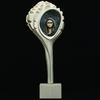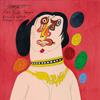Top ten things to know about the American flag
- June 03, 2010 16:31

Many people think that the flag we love so much as Americans was born alongside the Declaration of Independence on July 4th, 1776, or at least in the general vicinity of that day, but it was actually brought to life by the Flag Act of 1777, passed by Congress on June 14th of that year.
York, Penn.-based antiques dealer, Jeff Bridgman, a recognized authority on the history of American flags, divulges ten nuggets of information about the Stars & Stripes for those looking to impress on Flag Day, June 14.
1. Betsy Ross did not sew the first flag and she did not design it. It was instead designed by Francis Hopkinson of New Jersey, a signer of the Declaration of Independence.
2. Until 1905, commercial advertisements were allowed to be printed directly on the flag.
3. 13-star flags have been in use from 1777 until today, and still qualify as official American flags.
4. Before the 1920’s, flags were often huge so that they could effective serve their purpose as signals. Most were between 8 and 20 feet long. Garrison flags were nothing short of gigantic, at 35 to 45 feet.
5. Small printed flags that can be hand-held on sticks are called parade flags or “hand-wavers”. In the 19th century they were made in a never-ending variety of whimsical designs.
6. There was no official way to place the stars on the American flag until 1912, one hundred and thirty-five years after Congress approved its basic attributes.
7. Many old flags have rows or columns of stars, but more interesting patterns include stars placed in consecutive circular wreaths and something known as the "Great Star", which placed the individual stars in the form of one big star.
8. The flag had no official shape until 1912. Before then it might be square, or it might be exaggeratedly long and skinny.
9. Modern flag ethics didn't emerge until the 1890's. Before that time it was certainly admired, but it wasn’t the idolized object that it is today.
10. Because old flags came in so many designs, it has become popular to frame and display them as a combination of art and history.
















![Peter Paul Rubens (Flemish, 1577–1640), After Titian (Tiziano Vecelli) (Italian [Venetian], c. 1488–1576), Rape of Europa, 1628–29. Oil on canvas, 71 7/8 x 79 3/8 in. Peter Paul Rubens (Flemish, 1577–1640), After Titian (Tiziano Vecelli) (Italian [Venetian], c. 1488–1576), Rape of Europa, 1628–29. Oil on canvas, 71 7/8 x 79 3/8 in.](/images/c/e2/2e/Jan20_Rape_of_Europa100x100_c.jpg)



